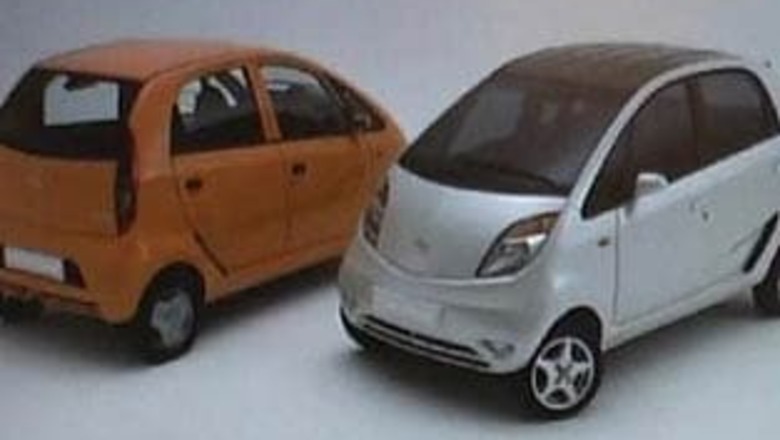
views
Mumbai: Tata Motors looks set to harness massive demand for its Nano, the world cheapest car, helping it raise funds to cover bridge loans for last year's purchase of the luxury Jaguar and Land Rover brands.
Interested buyers need to front up most of the cost of the new car in April, potentially giving Tata Motors $1 billion for at least three months and at least $200 million against the delivery of the first 100,000 units – which could take more than a year.
"We are expecting lakhs of applicants, judging from the initial reaction," said Chairman of top bank State Bank of India (SBI) OP Bhatt.
SBI has a tie-up as a preferred financier for Nano bookings. Tata Motor's cash needs are pressing. It has $100 million of cash left in its books as of the end of 2008 and is finding it hard to raise Rs 70 billion for working capital.
Before the credit crunch hit last year, Tata bought Jaguar and Land Rover – and the residual $2 billion of bridge loans on that deal falls due in June.
"The company can finance its working capital at nominal interest rates on booking amounts received for Nano," Brics Securities said in a research note.
Big deposit
Nanos have to be booked and a deposit of almost the full price has to be paid between April 9 and 25, but the first cars won't be available until July. Unsuccessful deposits won't be returned until then, and only if customers elect not to stay on the waiting list for the stubby four-seater.
For the basic Nano, a deposit of Rs 95,000 rupees is required on a car that will have a showroom price as low as Rs 1,12,735, and more for models with optional extras. There will be a lottery to select the first 1,00,000 owners, who may still have to wait more than a year for their car.
PAGE_BREAK
Once selected, the company keeps their deposit and pays no interest. Assuming some opt for the more expensive models, which have deposits of Rs 1,20,000 rupees and Rs 1,40,000, Tata Motors could receive an average booking fee of $2,000 per car. That is $200 million on the first 1,00,000 orders.
Demand is expected to far exceed 100,000, which will give the company a short-term float over the period its bridge loans fall due. Tata Motors can hold the deposits of unsuccessful applicants, who elect not to remain in the queue, for up to three months after the booking period closes and has said it will put the deposit money to use.
A purpose-built plant to make 250,000 Nanos a year will start late this year or early next year, and until then Tata Motors has put annualised capacity at existing plants at 50,000 to 60,000 Nanos. Assuming 500,000 applicants – a large number but the population exceeds 1.1 billion and 1.3 million cars were sold last year – and an average deposit of $2,000, that would give Tata Motors $1 billion.
On top of that, potential buyers also pay a fee just to submit an application – Rs 200 if booked online and Rs 300 otherwise. Assuming a 50-50 split between 500,000 applicants, that is another $2.5 million.
"We expect Tata Motors to benefit from one-time application fees... and funds float, which could be substantial even accounting for cancellations post-allotment, at a reasonable rate of interest at 8.5 percent," Bank of America Merrill Lynch analysts S Arun and Kunal Tayal said in a note.
Ratings
If people who miss out in the lottery for the first 1,00,000 Nanos want to remain in queue, their deposit stays with Tata Motors, who will pay 8.5 percent on deposits held for more than one year, and 8.75 percent on deposits held for more than two years.
The firm has been offering up to 11 percent for short-term paper after credit ratings downgrades.
Earlier this month, Moody's cut its rating to B3 with a negative outlook from B1, the second cut in five months.
Standard & Poor's has placed it at BB-minus with negative implications. Both rating agencies were concerned by deteriorating cash flows, its funding plan for capital expenditure and future debt composition.




















Comments
0 comment